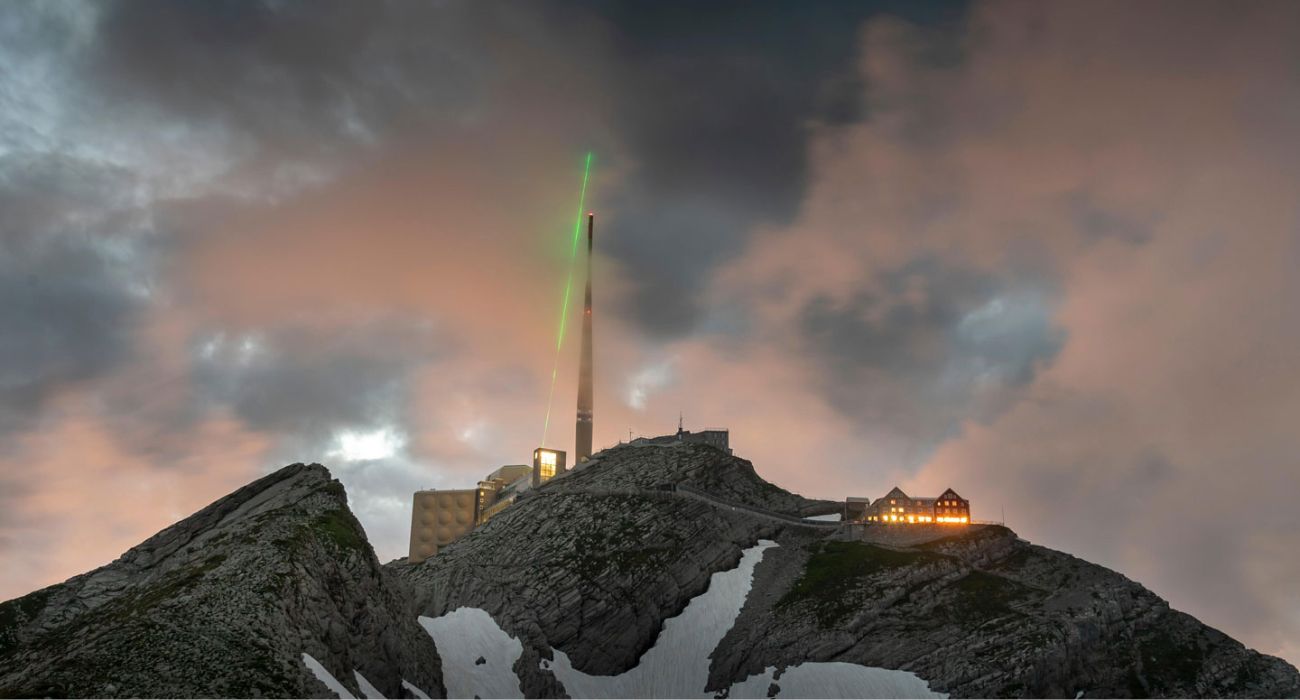Who needs Doc Brown and a clock tower to channel 1.21 gigawatts of electricity?
Scientists have managed to use a powerful laser to redirect lightning from a storm for the first time.
Scientists in the study created the laser-guided lightning project to develop extra protection methods against lightning in addition to current methods like the Franklin rod.
Aurélien Houard, a physicist at Institut Polytechnique de Paris in Palaiseau, France, and his colleagues conducted their project atop the Säntis mountain in northeastern Switzerland. The scientists placed a high-power laser near a telecommunications tower with an attached lightning rod.
This particular rod is struck by lightning around 100 times every year.
“If you want to protect some large infrastructure, like an airport or a launching pad for rockets or a wind farm … then you would need, for good protection, a lightning rod of kilometer size, or hundreds of meters,” said Houard, according to Science News.
This laser fired short intense bursts of infrared light into storm clouds at about 1,000 times per second for about six hours total during thunderstorms from July to September 2021.
Scientists tuned the laser to create an electrically conductive pathway just above the tip of the tower. This allowed the tower’s lightning rod to intercept a bolt snagged by the laser before it zipped all the way down to the laser equipment.
The tower was hit by lightning four times while the laser was activated. Scientists were able to capture a photo of one strike on July 24, 2021, a relatively clear day, illustrating the laser guiding a bolt of lightning.
Scientists used radio waves to confirm the other three bolts. These radio waves allowed scientists to reach the conclusion that the lightning was indeed following the path of the laser.
This result had been theorized before, with attempts to produce these results having been conducted in Singapore in 2011 and New Mexico in 2004. However, these previous attempts failed.
Scientists attributed the success of this operation to increased frequency in the laser’s firing sequence.
“We conjecture that an important factor contributing to the success of the Säntis campaign is the repetition rate of the laser, which was higher by two orders of magnitude when compared with previous attempts,” the scientists wrote in the study.
Despite promising results, some are skeptical of the applications of the laser. Atmospheric and space scientist Robert Holzworth from the University of Washington in Seattle questioned the applications of the laser given the relatively short length that the lightning was guided.
“They only showed 50 meters of [guiding] length, and most lightning channels are kilometers long,” said Holzworth.
Texas has also been dubbed the “lightning capital” of the nation, having received nearly 28 million lightning strikes in 2022, according to the 2022 Annual Lightning Report published by Vaisala Xweather. Florida ranks just behind Texas at nearly 19 million strikes.
While these strikes have not produced any serious damage to infrastructure, lightning still represents a hazard. The National Weather Service in Fort Worth told The Dallas Express that lightning will often impact buildings, trees, and cars and advises precaution in the wake of thunderstorms.






